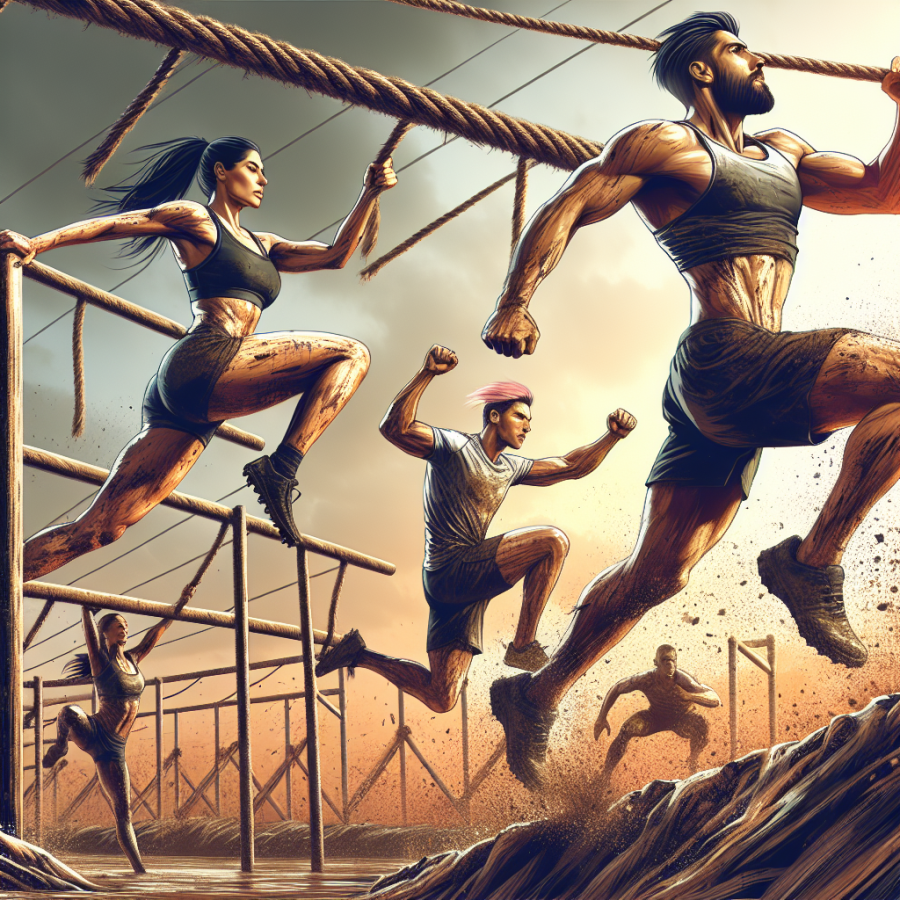The Evolution and Growing Popularity of Obstacle Course Racing
Obstacle Course Racing, also known as OCR, has come a long way since its inception. From small, local events, the sport has exploded into a global phenomenon, attracting millions of participants every year and establishing itself as one of the fastest growing sports in the world.
The roots of OCR can be traced back to the military, where obstacle courses were designed as a form of training for soldiers. These courses challenged both physical stamina and mental grit, with obstacles that simulated real-world challenges on the battlefield.
This military influence is still evident in many of today's obstacle races, such as the Spartan Race or the Tough Mudder. These events often include challenges such as rope climbs, wall jumps, and barbed wire crawls, in addition to running.
In the early days, OCR was seen as a fringe sport, something that only hardcore adrenaline junkies participated in. However, the perception of OCR has changed significantly over the years. Nowadays, obstacle course races are seen as accessible and fun events that offer a unique blend of physical testing and mental endurance.
The growing popularity of OCR is, in large part, due to its broad appeal. Unlike other endurance sports such as marathons or triathlons, obstacle course racing is not just about speed or distance. It's about overcoming challenges and pushing beyond one's comfort zone. This makes OCR accessible to a wide range of people - from elite athletes to fitness enthusiasts looking for a new challenge.
Furthermore, OCR has a strong sense of community, with races often being structured as team events. This aspect of collective achievement and camaraderie has proven to be a big draw for many participants.
Moreover, the sport has been boosted by the rise of social media. Participants love to share their experiences, muddy faces and all, which has helped to raise awareness and encourage others to join in.
The rise of OCR is also being recognised by more traditional sporting bodies. For example, the International Obstacle Sports Federation (IOSF) is campaigning for obstacle course racing to be recognised as an official sport and included in the Olympic Games.
To support the growth and maintain the popularity of OCR, race organisers are constantly pushing the boundaries to ensure the events remain challenging and exciting. This includes introducing new obstacles, longer distances and even different terrains.
However, this rapid growth also presents its own set of challenges. As the sport continues to evolve and increase in popularity, it becomes even more important for organisers to ensure participant safety and to respond to concerns around environmental sustainability.
Read also:
Why Fitness Classes are Essential for Maintaining a Healthy Lifestyle
Overcoming Barriers: The Hurdles and Solutions in Obstacle Course Racing
Obstacle course racing (OCR) has seen a massive surge in popularity over the last decade. This demanding sport combines distance running, strength, and agility training, and a slew of other physical challenges. However, with this rise in popularity, many athletes face numerous obstacles in both training and competition. Let's delve into the key hurdles and discuss potential solutions.
One of the most common barriers athletes encounter in OCR is the sheer physical demand of the sport. The courses often stretch over distances of 5 to over 20 kilometers, meaning runners need an excellent cardiovascular base to merely make it to the finish line. However, the physical demands don't stop at running—the obstacles themselves require a range of strength, agility, and technical skills. For beginners, this can seem like an immense hill to climb. Fortunately, numerous OCR-specific training programs have been developed, many of which offer a gradual approach to building these skills and conditioning levels.
Similarly, another hurdle is the lack of specific training facilities or opportunities. Since OCR incorporates so many disparate elements—everything from wall climbs and rope swings to carrying heavy objects and crawling under barbed wire—the challenges in finding a specialized training place are evident. This is especially true for urban dwellers. However, more and more gyms are beginning to offer OCR-focused training areas and classes. Moreover, techniques like functional fitness workouts at home or local parks can help build the strength and agility needed for OCR.
Injuries pose another significant barrier in OCR. The combination of running on usually uneven terrain, combined with the strain of the obstacles, can lead to a range of injuries from sprains and strains to more serious scenarios like fractures. To combat this, athletes need to take a proactive approach to injury prevention. This includes listening to the body and not pushing too hard, wearing appropriate gear that offers adequate support and protection, and incorporating exercises to improve balance, flexibility, and joint stability into their training regimes.
Mental toughness is another vital aspect of OCR, but it's one where many athletes struggle. The grueling nature of the races—both in terms of length and difficulty—can quickly lead to mental fatigue. It's not uncommon for racers to give up partway through simply because they believe they can't go on. Thankfully, this is another area where proper training can have a significant impact. Techniques like visualization, goal-setting, and mindfulness practices can all aid in building the mental fortitude necessary to complete an OCR.




